You'll find modern ovens match nature's temperature ranges because they evolved from ancient cooking methods that relied on the sun, fire, and Earth's heat. Early civilizations learned to harness these natural heat sources, which typically operate between 250°F to 400°F – the same range your kitchen oven uses today. This isn't coincidental; humans developed cooking tools by observing and replicating nature's most effective heating patterns. From solar ovens reaching 550°F to traditional methods using tactile temperature tests, our cooking technology continues to mirror these time-tested natural heat scales. Understanding this connection reveals fascinating insights about how we cook today.
Solar Heat Versus Electric Ovens
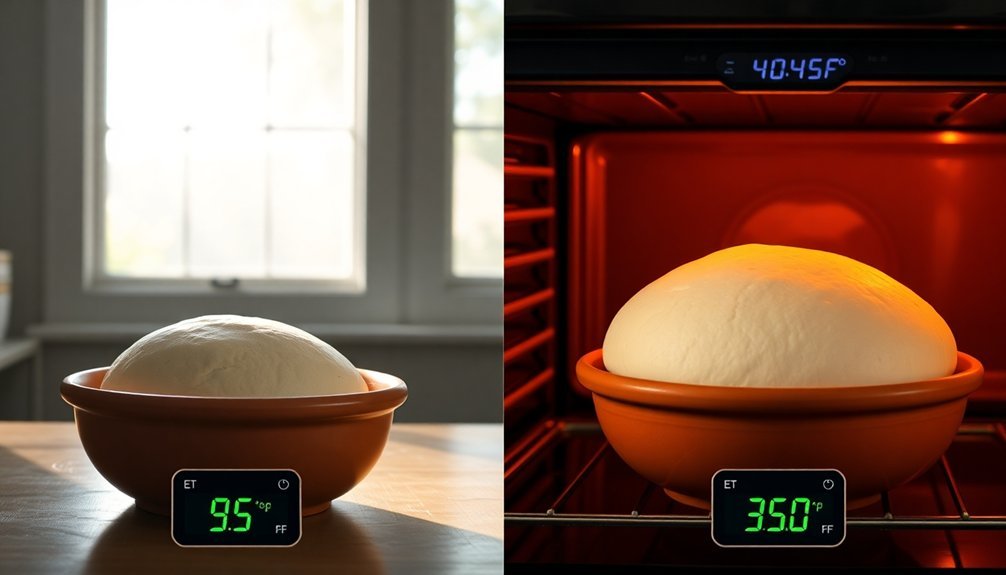
While both solar and electric ovens can effectively cook your meals, they operate on fundamentally different principles.
Solar ovens harness free radiation from the sun, reaching temperatures up to 550°F without emissions or fuel costs. The Sun Oven International model features four aluminum panels that maximize heat collection. You'll find them particularly useful for outdoor cooking and off-grid living.
Electric ovens rely on heating elements that convert electrical energy into heat, offering you precise temperature control and even heat distribution. Though they're more expensive initially, they're cheaper to operate long-term compared to gas alternatives.
You'll notice solar ovens like the GoSun Go can cook meals in 20 minutes, while electric ovens need longer preheating times.
If you're looking for versatility, some solar ovens now come in hybrid models, letting you switch to electric power when sunlight isn't available.
Historical Temperature Standards Through Time
Looking back through time, you'll find that early civilizations relied on crude methods like touching objects or observing physical changes to gauge heat levels.
You can trace the evolution of precise temperature measurement to the 1700s, when pioneers like Gabriel Fahrenheit and Anders Celsius developed standardized scales that revolutionized how we measure heat.
These foundational temperature standards continue to shape your modern experience, from cooking in ovens to understanding global climate patterns. By the early 19th century, the development of coal and gas ovens marked a significant advancement in controlled temperature cooking.
Ancient Heat Measurement Methods
Before modern thermometers transformed temperature measurement, ancient civilizations relied on ingenious yet simple methods to detect and monitor heat.
You'll find that Egyptian physicians used their hands to scan bodies for temperature changes, while Greek healers applied wet mud to detect warmer areas – spots where the mud dried faster indicated diseased tissue. It wasn't until Sir William Herschel's discovery in 1800 that infrared radiation was scientifically understood.
Hippocrates' observations linked excess heat or cold to illness, showing how early medicine understood temperature's importance.
The Greeks also experimented with air expansion in closed tubes, though they couldn't measure it precisely. Without standardized scales, they depended entirely on sensory observations and natural phenomena.
Even in cooking, people gauged oven temperatures by inserting their arms into the chamber – a risky but common practice that preceded today's precise measurement tools.
Temperature Units Through Ages
The journey from ancient heat detection to modern temperature measurement spans millions of years of Earth's history.
You'll find that Earth's temperatures have fluctuated dramatically, from scorching Precambrian oceans at 55-85°C to today's more moderate climate.
You can trace how scientists developed increasingly precise methods to measure these changes.
They've moved from basic observations to sophisticated techniques like oxygen isotope analysis and multi-proxy estimates.
When you look at temperature records, you'll see how we've progressed from rough geological estimates to precise measurements starting around 1880.
Today's standards reflect this evolution, as we've updated our climate normals every decade to account for warming trends.
You're now living in an era where global temperatures have risen over 1°C since the Industrial Revolution, with most warming occurring since 1975.
Legacy of Early Standards
Since technological advancements in temperature control emerged gradually, you'll find fascinating connections between early oven designs and modern safety standards.
The evolution from France's first brick-and-tile oven in 1490 to Count Rumford's innovative iron stove in the 18th century laid the groundwork for today's safety protocols.
You'll notice how these early developments influenced UL 858, which now strictly regulates surface temperatures and handle safety.
While early ovens required manual wood adjustment for heat control, modern standards guarantee precise temperature limits during all operations, including self-cleaning cycles.
This safety-first approach stems from centuries of understanding how materials interact with heat.
Even as climate changes affect cooking patterns and oven usage, these foundational standards continue shaping the development of safer, more efficient cooking technologies.
Natural Cooking Energy Sources
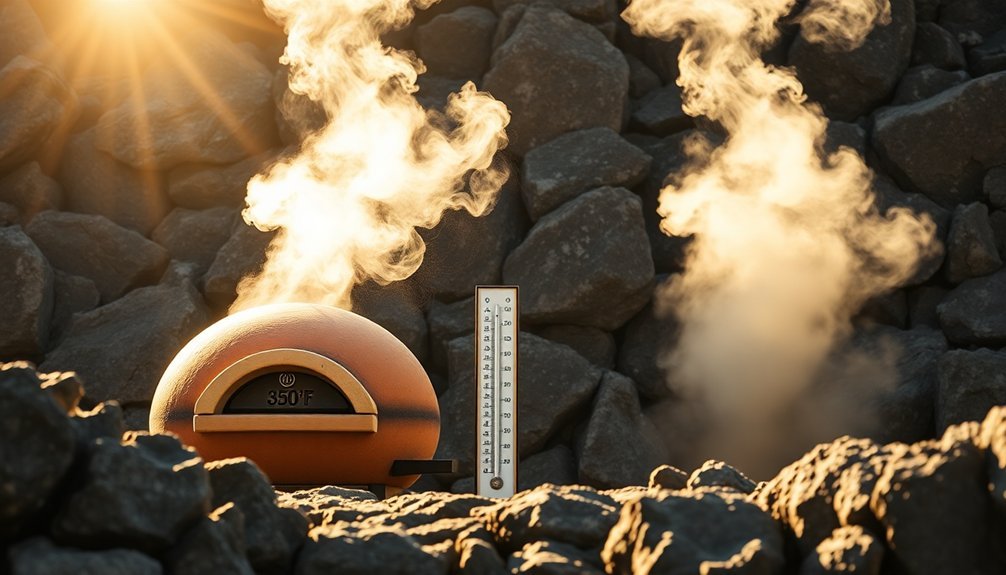
Modern cooking methods draw from an impressive array of natural energy sources that can replace traditional fossil fuels.
You'll find solar power leading the way in sunny regions, eliminating ongoing fuel costs while providing clean energy for cooking. Biogas offers another sustainable option, converting your organic waste into cooking fuel through anaerobic digestion.
You can also tap into other renewable sources like wind and water-generated electricity for your cooking needs.
While geothermal energy isn't commonly used in kitchens yet, it holds potential for heating and cooking applications.
For immediate clean cooking solutions, you'll find LPG and natural gas offering efficient alternatives to traditional biomass, though they're not renewable.
When you're choosing a cooking fuel, consider both environmental impact and local availability to make the most sustainable choice.
Temperature Scales Meet Solar Power
You'll quickly notice how solar cooking temperatures mirror nature's own heating scale, with most solar ovens operating between 250°F to 400°F on sunny days.
Just as solar panels lose efficiency above 77°F (25°C), your solar cooking setup needs proper ventilation and heat distribution to maintain consistent temperatures for even cooking results.
The natural distribution of heat in a solar oven works much like the passive cooling techniques used in solar panel installations, where proper spacing and airflow help manage temperature levels for ideal performance.
Solar Cooking Temperature Ranges
Solar ovens harness the sun's energy to achieve a remarkable range of cooking temperatures, from gentle warming to intense heat that rivals conventional ovens.
You'll find different types of solar cookers reaching various temperature ranges, with parabolic models hitting an impressive 800°F at their peak.
- Box-type ovens reach 160-400°F, perfect for most daily cooking needs
- Parabolic cookers soar to 300-800°F, making them ideal for high-heat cooking
- Panel cookers operate at 200-300°F, suitable for moderate-heat dishes
- Portable models achieve 210-260°F, great for camping and outdoor use
You can maximize these temperatures by using dark cookware, proper insulation, and positioning your oven to track the sun.
Keep in mind that best cooking happens between 11 AM and 3 PM when sunlight's most intense.
Natural Heat Distribution Methods
When it comes to harnessing nature's heat, understanding temperature scales intersects directly with efficient heat distribution methods.
You'll find both passive and active solar systems work with your home's natural convection patterns to maximize heat retention. Passive designs utilize south-facing windows and thermal mass materials like brick to capture and store solar energy, while active systems pump heated fluid through radiant floors or baseboards.
You can boost efficiency by combining these methods with geothermal heating, which taps into the earth's stable underground temperatures.
It's essential to recognize that solar panel performance decreases as temperatures rise, dropping 0.4-0.5% per degree Celsius.
That's why proper heat distribution isn't just about warming your space – it's also about maintaining ideal operating temperatures for your solar equipment through strategic cooling and ventilation.
Converting Kitchen Recipes For Outdoors
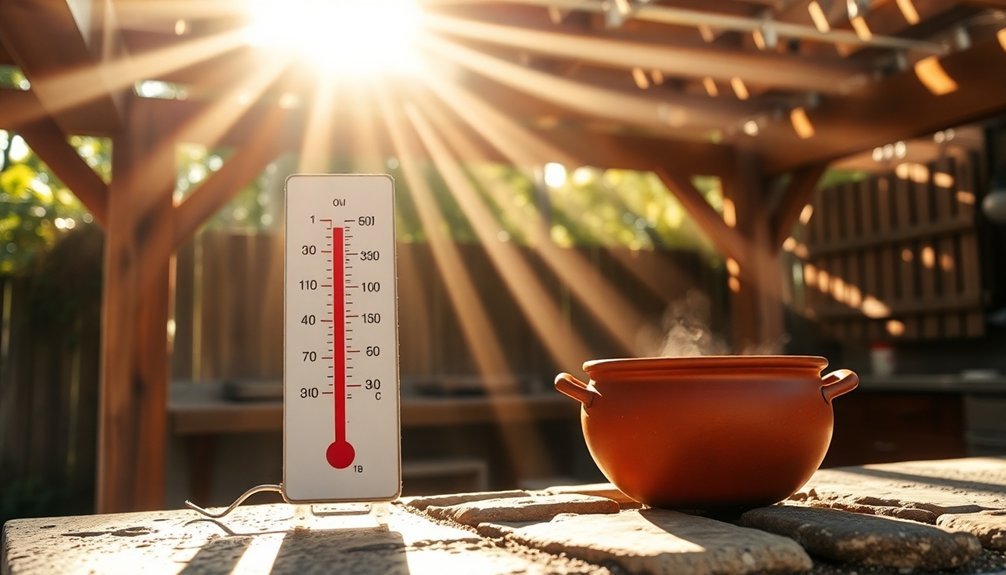
Transforming favorite indoor recipes for outdoor cooking requires understanding key conversion principles and adaptations.
You'll need to adjust serving sizes using conversion factors and modify cooking techniques for outdoor heat sources.
- Calculate your conversion factor by dividing new servings by original servings (example: 10 servings ÷ 4 servings = 2.5)
- Choose appropriate cookware, avoiding glass and opting for aluminum or cast iron instead
- Set up your cooking area downwind and maintain stable heat by minimizing lid openings
- Monitor cooking progress using smell cues and temperature gauges
When adapting oven recipes for grills, set the temperature 25°F higher initially, then adjust.
For wilderness cooking, embrace methods like Dutch ovens and foil packets.
Remember to start with simple recipes as you learn to master outdoor heat variations, and always follow the original recipe's ingredient ratios and mixing instructions.
Maximum Solar Heat Potential
While outdoor cooking harnesses natural heat sources, understanding maximum solar heat potential helps you optimize natural energy capture.
You'll find that solar panels reach peak efficiency at 77°F (25°C), but their performance changes with temperature fluctuations. For every degree above 77°F, you'll lose 0.35% efficiency, while temperatures below this threshold can boost efficiency by 0.258% per degree.
You can expect solar panels to function between -40°F and 185°F, though extreme temperatures affect their output markedly.
During summer, you'll get more daylight hours but reduced efficiency from heat. Winter brings fewer sunlight hours but better efficiency due to cooler temperatures.
Understanding these patterns lets you maximize solar energy collection throughout the year, whether you're using panels for cooking or power generation.
Finding Your Optimal Cooking Zone
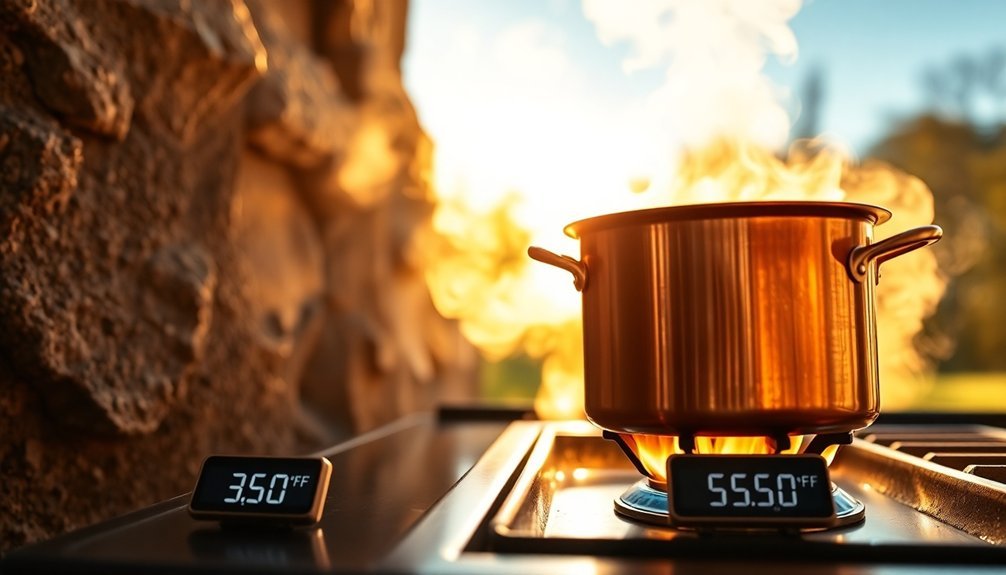
Your oven's ideal cooking zone depends on understanding how temperature sweet spots work with different rack positions.
You'll find that heat patterns shift dramatically between the top, middle, and bottom zones, making each level perfect for specific cooking methods.
Temperature Sweet Spots
To master your oven's cooking zones, understanding its unique temperature patterns is essential. You'll discover that heat isn't distributed evenly, with hot spots forming near heating elements and corners.
The bread test helps you create a visual heat map – simply arrange white bread slices in a grid and watch how they brown.
- Position thicker cookware near hot zones for crispy results
- Use the middle rack for even cooking, top rack for browning
- Keep the oven door closed to maintain consistent temperatures
- Rotate pans between racks during multi-dish cooking
Once you've identified your oven's temperature sweet spots, you can strategically place dishes for ideal results.
Position roasts with thicker portions near hot zones, and use convection settings when available to minimize temperature variations.
Heat Distribution Patterns
Understanding heat distribution patterns in your oven reveals distinct cooking zones that can make or break your culinary results.
You'll find your oven naturally creates three primary zones: top, middle, and bottom, each serving specific cooking purposes.
The top zone, being hottest due to rising heat, works best for broiling and browning. Your middle rack provides the most balanced heat distribution, making it ideal for general baking and reheating.
The bottom zone, closest to the main heat source, excels at creating crispy crusts on pizzas and bread.
If you're using a convection oven, you'll notice more uniform heating thanks to the fan-circulated air.
Just remember to lower your temperature by 25-50 degrees to compensate for the enhanced heat distribution, preventing overcooked exteriors while ensuring even results.
Time-Temperature Balance
Beyond mastering heat zones, finding the perfect balance between time and temperature forms the cornerstone of successful cooking.
You'll need to adjust these two variables carefully to achieve ideal results while maintaining food safety.
- Higher temps require shorter cooking times but demand closer monitoring to prevent burning
- Lower temps need longer cooking periods but often yield more tender, evenly cooked food
- The danger zone (41°F-135°F) must be avoided for more than 4 hours to prevent bacterial growth
- Different oven types heat at varying rates, so always test and calibrate your timing
Seasonal Temperature Changes Impact Cooking
As climate patterns continue to shift, seasonal temperature changes considerably influence how we cook and prepare meals throughout the year.
You'll notice these changes affecting everything from ingredient availability to cooking techniques. When temperatures rise, you might need to adjust your cooking methods to compensate for ingredients that aren't performing as they traditionally would.
You'll find that dairy products may have different consistencies due to heat-stressed cows producing milk with altered fat content.
Your favorite seafood dishes might require substitutions as marine species migrate to cooler waters. Even common vegetables like potatoes and cabbage might become scarcer or of different quality.
To adapt, you can embrace energy-efficient cooking methods like steam ovens and natural gas stoves, which help you maintain food quality while reducing environmental impact.
Earth's Natural Heat Patterns
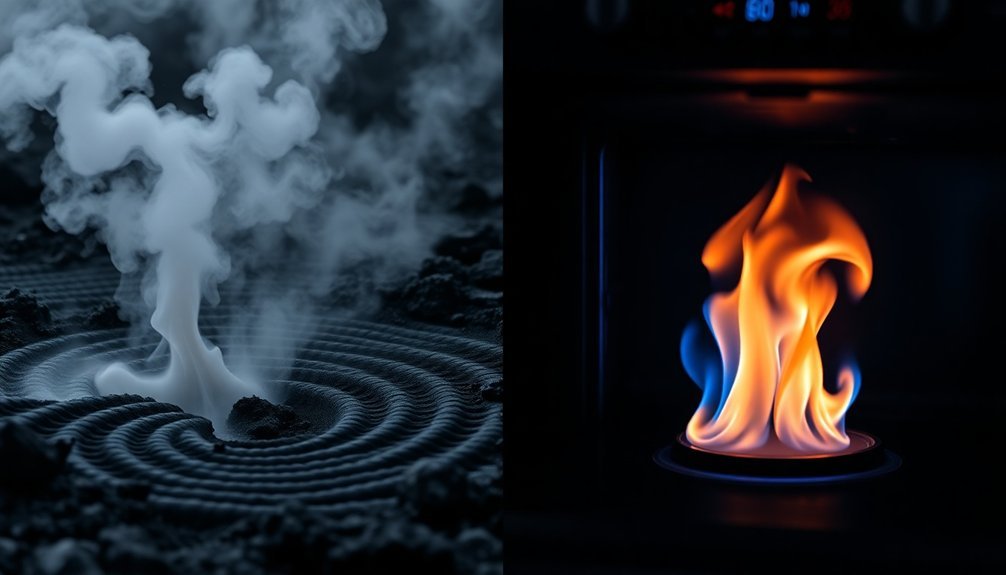
The Earth's complex heat patterns extend far beyond our kitchen concerns, operating on a grand geological scale. You'll find heat flowing through our planet in fascinating ways, from the fiery core to the cool crust.
Most of Earth's internal heat moves through mantle convection and crustal conduction, with volcanic activity playing a smaller role. The heat you feel beneath your feet comes from two main sources: leftover heat from Earth's formation and ongoing radioactive decay.
Key heat patterns you should know:
- Highest heat flows occur at mid-ocean ridges where new crust forms
- Heat transport drives plate tectonics and mountain building
- Earth's magnetic field depends on core heat flow
- Internal heat powers earthquakes and volcanic activity
While these processes shape our planet, they contribute minimally to atmospheric temperature, which relies mainly on solar radiation.
Traditional Methods Meet Modern Technology
Modern technology has revolutionized our traditional cooking methods, seamlessly blending time-tested techniques with cutting-edge innovations.
You'll find that today's ovens combine the best of both worlds – from intuitive touchscreen interfaces to smart temperature controls that mirror nature's own heating patterns.
You can now harness multiple cooking techniques in a single appliance. Whether you're using convection for even browning, steam for moisture retention, or combination modes for perfect results, these advanced ovens give you unprecedented control.
They'll automatically adjust temperature and humidity through pre-programmed cycles, while energy-efficient designs cut your power consumption by up to 28.7%.
Even traditional wood-fired masonry ovens have evolved to use natural gas or electricity, ensuring you get consistent results while maintaining that authentic cooking experience.
Frequently Asked Questions
Can Oven Temperatures Accurately Mimic Natural Geothermal Cooking Methods?
You can't perfectly replicate geothermal cooking in ovens since they use dry heat instead of natural steam. While you'll achieve similar temperatures, you'll miss the unique moisture and mineral-rich environment of geothermal cooking.
Why Don't Ovens Use Nature's Temperature Ranges as Their Default Settings?
You'll find ovens don't use nature's temperature ranges because they're designed for specific cooking tasks, safety requirements, and efficiency. Modern cooking needs precise control that natural temperatures can't reliably provide.
How Do Altitude Changes Affect Natural Versus Artificial Cooking Temperatures?
While your oven's temperature stays constant regardless of altitude, natural boiling points drop as you go higher. You'll need longer cooking times for boiled foods, but oven-baked dishes won't require temperature adjustments.
Do Electromagnetic Fields Influence Temperature Readings in Modern Ovens?
Yes, your oven's electromagnetic fields can affect temperature readings by interfering with digital sensors. However, modern ovens typically shield their thermometers to prevent distortion and maintain accurate measurements during microwave operation.
What Role Does Humidity Play in Matching Natural Heat Patterns?
You'll find humidity acts as a natural temperature regulator, affecting heat transfer and moisture distribution. It creates similar patterns in ovens as in nature, controlling heating rates and thermal equilibrium processes.
In Summary
You've discovered how Earth's natural heating patterns align remarkably with our modern cooking temperatures. Whether you're baking in a solar oven or using conventional appliances, you'll find these heat ranges mirror nature's own thermal scale. By understanding this connection between natural and artificial heat sources, you can adapt your cooking methods seamlessly between indoor and outdoor environments, while preserving traditional techniques in modern cooking applications.

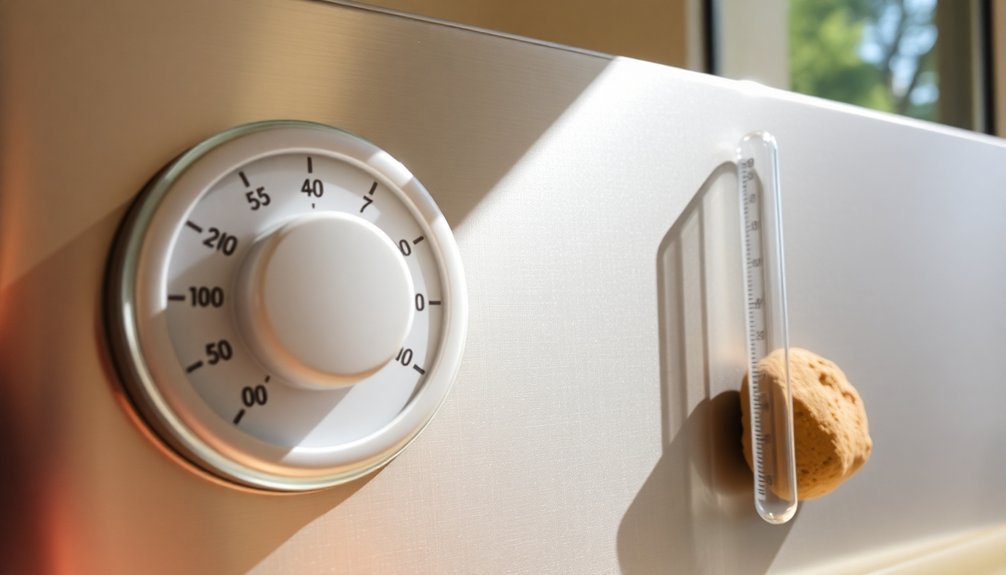
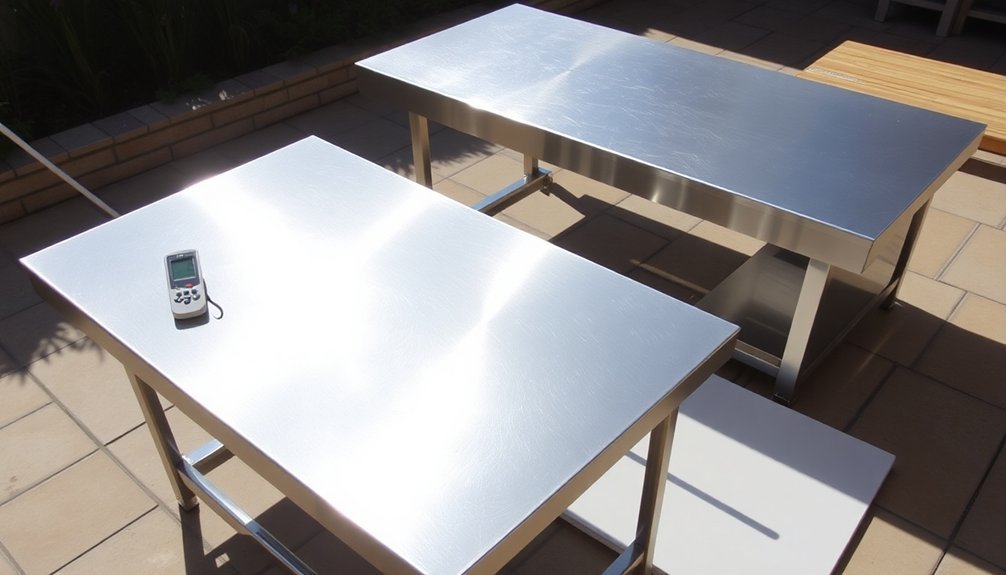
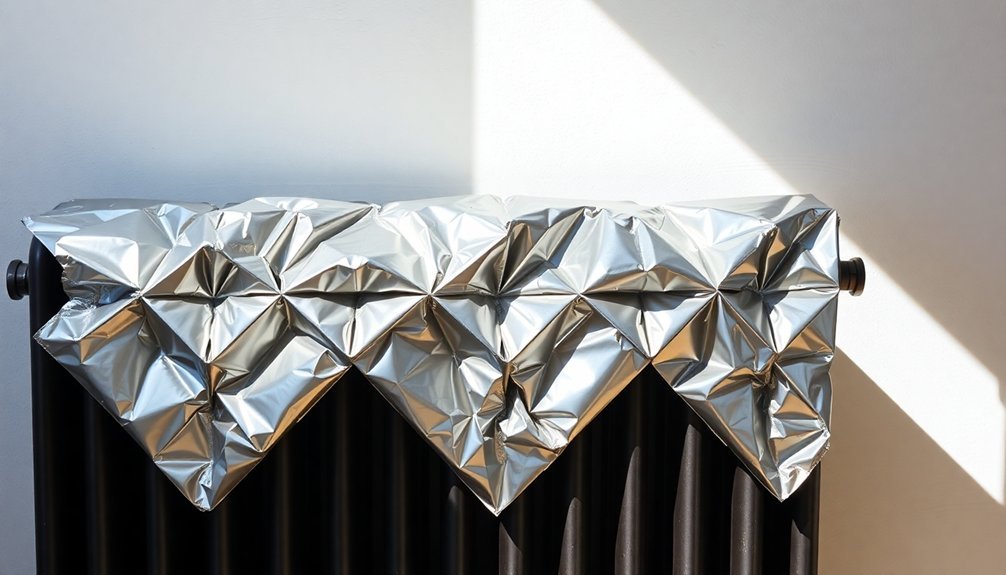

Leave a Reply